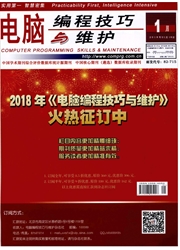

 中文摘要:
中文摘要:
秸秆还田和氮肥施用是影响稻田土壤固碳潜力和温室气体排放的重要农作措施。通过研究油菜秸秆全量还田并配合施入不同量氮肥(150、225、300 kg·hm^(-2)和375 kg·hm^(-2))对稻田土壤固碳量和温室气体排放的影响,评估综合增温潜势,对分析秸秆还田配施氮肥对稻田固碳效果有重要作用。结果表明,与单施氮肥和单施秸秆处理相比,秸秆还田配施氮肥显著增加土壤固碳量,秸秆配施氮肥处理固碳量最高值为147.74 kg·hm^(-2),比单施氮肥处理平均高出38%。在降低温室效应方面,与单施氮肥相比,秸秆配施氮肥处理显著降低N_2O的累积排放量;与单一秸秆还田处理相比,秸秆配施氮肥处理显著提高水稻产量,降低CO_2的累积排放量,但在一定程度上增加了CH_4的排放。秸秆配施氮肥处理的温室气体强度和综合温室效应分别为0.372、5 394.22 kg CO_2-eq·hm^(-2),显著低于单施氮肥处理的0.630、9 339.94 kg CO_2-eq·hm^(-2),以及单一秸秆还田处理的0.816、9 872.2 kg CO_2-eq·hm^(-2),因此,秸秆还田配施氮肥是降低温室气体排放强度、减缓净温室效应的有效措施。
 英文摘要:
英文摘要:
Application of the straw and fertilizer can affect the potential of soil carbon sequestration and green-house-gas(GHG)emission in paddy field. This study returned straw of oilseed rape(Brassica campestris L.)with different quantity of nitrogen fertilizer(150, 225, 300kg·hm^(-2)and 375 kg·hm^(-2))to figure out the effect of straw returned accompanied with nitrogen fertilizer on soil carbon sequestration and GHG in paddy field and to assess the global warming potential(GWP). The results showed treatments of straw returning with nitrogen fertilizer significantly increased the soil carbon sequestration, with the highest value of 147.74 kg·hm^(-2), 38% higher than only nitrogen fertilizer treatments on average. It suggested the straw-returning with nitrogen fertilizer could increase the soil carbon sequestration in contrast to the only nitrogen fertilizer treatments. Meanwhile, compared with the only nitrogen fertilizer treatment, straw returning with nitrogen fertilizer could increase rice yield, while reduce the CO_2 emission, however, it increased CH_4 emission slightly. The green-house-gas intensity(GHGI)and GWPs of straw returning with nitrogen fertilizer was 0.372, 5 394.22 kg CO_2-eq·hm^(-2), which was significantly lower than the only nitrogen fertilizer of 0.630, 9 339.94 kg CO_2-eq·hm^(-2) and straw returning treatment of 0.816, 9 872.2 kg CO_2-eq·hm^(-2), respectively. It suggested the straw returning with nitrogen fertilizer could reduce GHGI emission and mitigate the global warming efficiently.
 同期刊论文项目
同期刊论文项目
 同项目期刊论文
同项目期刊论文
 期刊信息
期刊信息
